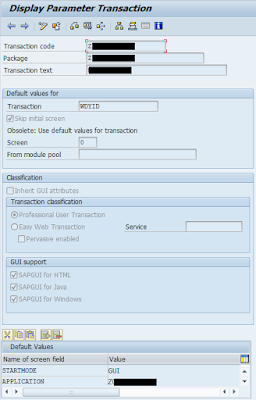1.
t-code DB02 -> Space -> Segments -> Detailed
Analysis -> enter values into fields:
Segment / Object = table name
Type = TABLE
2.
t-code DBACOCPIT -> Space -> Segments -> Detailed
Analysis -> enter values into fields:
Segment / Object = table name
Type = TABLE
3.
ABAP report RSTABLESIZE. On it selection screen just specify table
into field "Table Name ". Notice this doesn't work for BW objects
e.g. starting with prefix /BIC/* for which do DB
statistics wasn't calculated yet.
4.
Table DBSTATTORA which displays actual size of tables on
the database. Just enter the table name into the field TNAME. Table size is
shown in field OCCBL - Used blocks of a table in KB. Again to have this value
in the table DB
statistics must be up2date.
5.
t-code TANA. Start first table analysis for desired
table. Once it is finished display the analysis with the same t-code. Notice this
t-code just gets no of entries of the table instead of table size.
6.
Function module GET_TABLE_SIZE_. This is DB
specific function. As SAP systems are basically "Any DB" systems
which mean several
major DB vendors are supported you just need to find proper FM for your DB.
Adabas/SAP DB ada/sdb GET_TABLE_SIZE_ADA
Microsoft SQL Server mss GET_TABLE_SIZE_MSS
Oracle ora GET_TABLE_SIZE_ORA
IBM DB2/390 db2 GET_TABLE_SIZE_DB2
IBM DB2/400 db4 GET_TABLE_SIZE_DB4
IBM DB2 UDB db6 GET_TABLE_SIZE_DB6
Informix inf GET_TABLE_SIZE_INF
Sybase ASE syb GET_TABLE_SIZE_ALL
HANA Database hdb GET_TABLE_SIZE_ALL
PS: let me know in case
you are aware of any other options of how to find out table size form SAP GUI.



